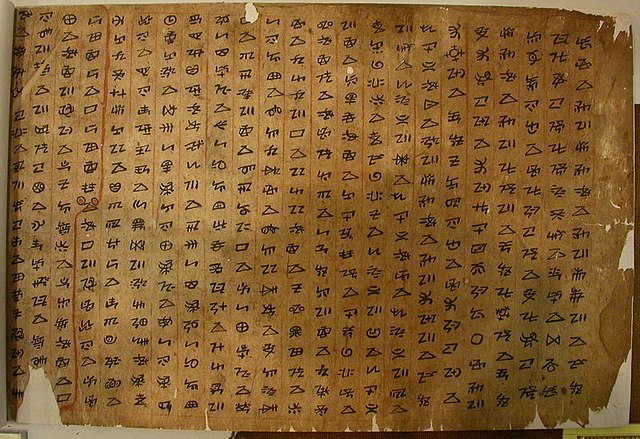The Yi scripts are two scripts used to write the Yi languages; Classical Yi, and the later Yi syllabary. The script is historically known in Chinese as Cuan Wen or Wei Shu and various other names (夷字、倮語、倮倮文、畢摩文), among them "tadpole writing" (蝌蚪文).
A Yi manuscript from 1814.
A classical Yi manuscript.
Trilingual signs, in Chinese (ideographic script), Yi (syllabic script), and Hani (alphabetic Han Pinyin romanization) on the Lihaozhai Township government office. Jianshui County, Yunnan. The Yi and Hani texts apparently have a syllable-to-syllable correspondence to the Chinese text. The standard Sichuan Yi Pinyin transcription is not used here because these signs are displayed in a province where the Nuosu (Northern Yi) language is not natively spoken. The displayed transcription with the modern Yi syllabic script (which is a huge simplification of the Classical Yi logosyllabic script which were used before the 1980s but with many non standardized variants) is less precise than the modern Hani Pinyin romanization.
Nuosu or Nosu, also known as Northern Yi, Liangshan Yi, and Sichuan Yi, is the prestige language of the Yi people; it has been chosen by the Chinese government as the standard Yi language and, as such, is the only one taught in schools, both in its oral and written forms. It was spoken by two million people and was increasing ; 60% were monolingual.
Nuosu is the native Nuosu name for their own language and is not used in Mandarin Chinese, though it may sometimes be translated as Nuòsūyǔ.
A signpost in a public park in Xichang, Sichuan, China, showing Modern Yi, Chinese and English text.




